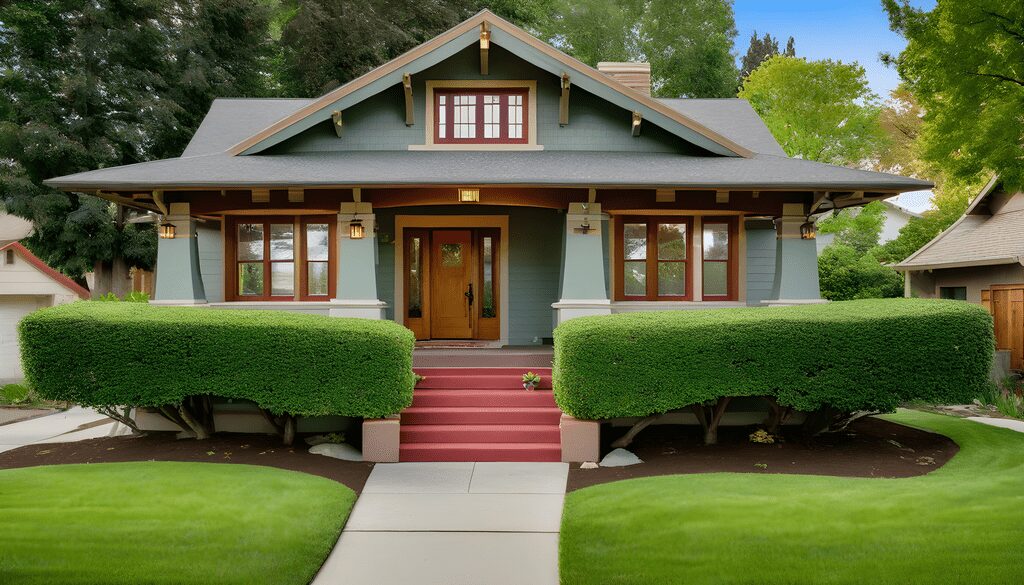Have you aspirations of constructing your own comfortable haven? Perhaps bungalow house plans could be the solution to your quest. Bungalows possess a unique charm and ageless allure, making them an in-demand preference for homeowners seeking seclusion or an ideal family abode. Our comprehensive guide will take you through each stage of creating and erecting your very own bungalow.
We have all your bungalow house needs covered, from selecting the ideal floor plan for you to comprehending the defining architectural components. We will teach you how to integrate crucial aspects such as generous verandas, unobstructed layouts and one-of-a-kind artisanal characteristics that bestow upon bungalows their unmistakable charm.
Whether you’re an inexperienced constructor or a proficient property owner, this all-encompassing manual will furnish you with the expertise and motivation to actualize your ultimate bungalow vision. Prepare yourself for an enthralling architectural expedition as we delve into the specifics of constructing bungalow abodes. Unleash your creative potential and invent the idyllic area that embodies your individual flair and aspirations.
Advantages of Bungalow House Plans
Among homeowners, bungalow house plans are a favored choice due to their numerous benefits. One of these advantages is that they feature a single-story floor plan which provides accessible and comfortable living spaces suitable for people of all ages. Furthermore, individuals with mobility problems can benefit from the absence of stairs in bungalows since it enables easy movement around the dwelling.
In addition, bungalows have a reputation for utilizing space effectively. By having an unobstructed layout, one can fully utilize the available area and achieve a consistent transition between various areas. This feature promotes effortless upkeep and cleaning, making it suitable for people searching for low-maintenance living alternatives.
Finally, bungalows frequently showcase roomy porches that expand the living area to include outdoor spaces. These sections outside serve as ideal locations for unwinding, hosting company or reveling in the beauty of nature surrounding them. The blend of indoor coziness and an open-air connection make a bungalow a truly alluring and enjoyable choice for homeowners.
Types of Bungalow House Plans

There is a diverse range of bungalow house plans available, each boasting distinctive features. If you’re in search of inspiration for your dream home, consider these well-known varieties:
- Craftsman Bungalow: The Craftsman Bungalow style had its roots in the early 1900s and is distinguished by the use of natural materials and intricate handmade decorations. These types of bungalows typically showcase expansive front porches, exposed rafters, as well as decorative features that include tapered columns alongside built-in cabinetry.
- California Bungalow: The California Bungalow style gained popularity during the early 1900s due to its simplistic design and strong connection with nature. One of its signature features is a low-pitched roof along with broad eaves that offer abundant shade, while also allowing in plenty of sunlight through large windows. Additionally, these homes frequently prioritize outdoor living spaces such as expansive front porches or enclosed courtyards.
- Cottage Bungalow: Cottage bungalows have an intimate and cozy ambiance, usually with smaller dimensions suited for those seeking a retreat-style dwelling. These homes often boast delightful features such as steep roofs, dormer windows, and inviting porches.
- Modern Bungalow: The Modern Bungalow presents an updated interpretation of the traditional bungalow aesthetic, boasting clean and minimalistic designs. These residences typically include uncluttered outlines, expansive layouts, and ample windows that allow natural light to diffuse throughout the interior for a luminous atmosphere.
Factors to Consider When Choosing a Bungalow House Plan

To guarantee that the bungalow house plan is tailored to your requirements and desires, you should take into account a few essential factors. The following are some of the most significant considerations:
- Size and Layout: Consider your lifestyle and determine the appropriate square footage and layout. Think about how many bedrooms, bathrooms, and common areas you will require for personal or family purposes.
- Lot Requirements: When selecting a house plan, be mindful of your lot’s dimensions and contours, as well as any applicable zoning or construction limitations. It’s important to make sure that the chosen blueprint fits within the available area and adheres to regional guidelines.
- Future Expansion: In anticipation of potential growth or changes in your living situation, it’s advisable to choose a house plan that offers room for expansion or modification. This adaptable feature will enable your bungalow to accommodate any future needs you might have.
- Architectural Style: When selecting a bungalow house plan, it is important to consider your preferred architectural style. Whether you favor traditional designs, modern aesthetics or something in between, finding a plan that appeals to your sense of style is essential.
- Energy Efficiency: To decrease your utility bills and lessen environmental impact, it’s worth considering integrating energy-efficient elements like insulation, solar panels, and energy-saving windows into the design of your bungalow home.
Don’t forget that choosing the appropriate bungalow home design sets the groundwork for crafting a dwelling that satisfies your requirements and embodies your unique taste. Invest ample time in investigating varied alternatives and seek guidance from experts to guarantee an informed choice.
